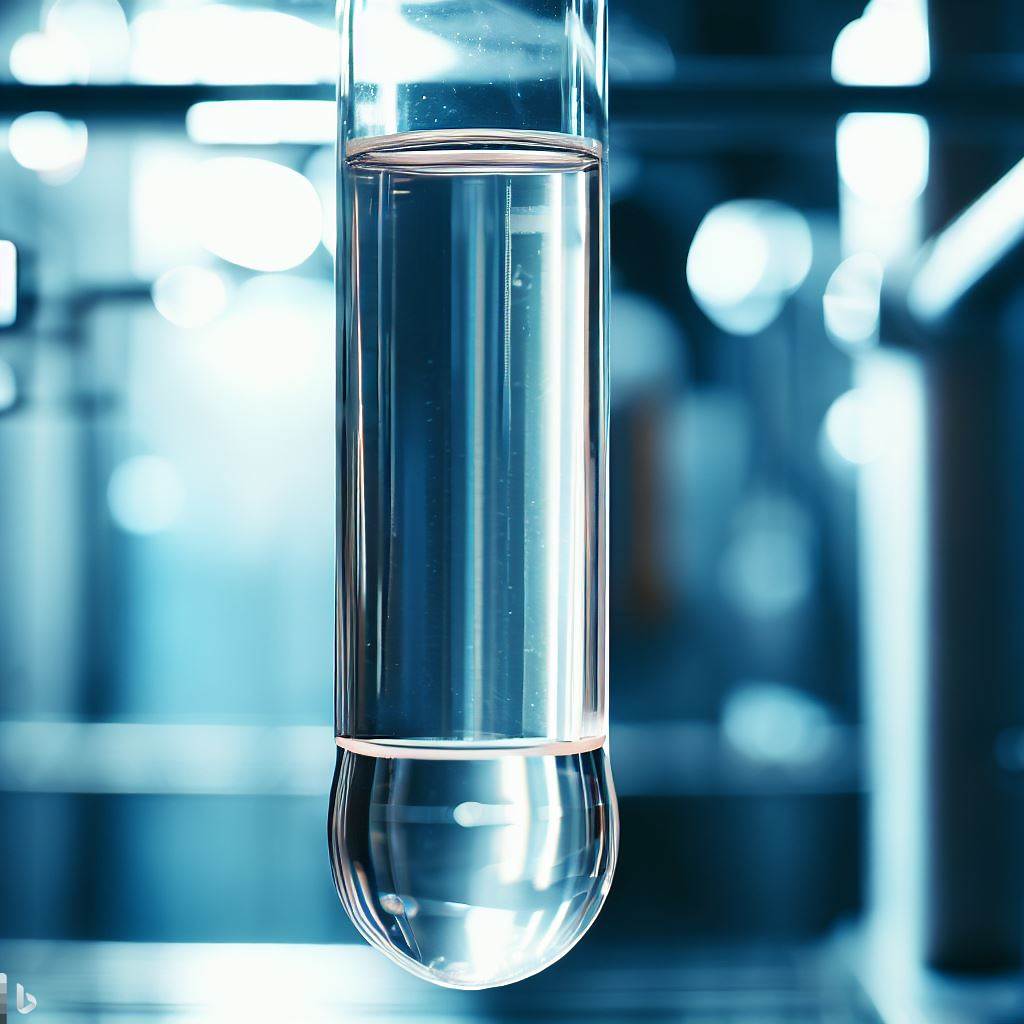Transmission electron microscopy (TEM) is a powerful imaging technique that uses a beam of electrons to create high-resolution images of a sample. By employing a beam of electrons rather than conventional light, TEM allows researchers to delve into the intricacies of materials at the nanoscale level. This technique has proven indispensable in a multitude of scientific domains, including materials science, biology, and nanotechnology. In this article, we will explore the basics of transmission electron microscopy and its applications.
How Does Transmission Electron Microscopy Work?
In a transmission electron microscope, a beam of electrons is generated by an electron gun and focused onto the sample using electromagnetic lenses. The electrons pass through the sample and are then collected by a detector, which creates an image based on the electrons that have passed through the sample. The resolution of TEM images can be as high as 0.1 nanometers, allowing for the visualization of individual atoms.
Components of transmission electron microscope

The components of a Transmission Electron Microscope can be broadly categorized into several key parts:
- Electron Source:
- Electron Gun: This is the source of electrons in a TEM. It typically consists of a tungsten filament or a field emission cathode. The electrons are emitted and accelerated towards the specimen.
- Condenser System:
- Condenser Lens: A series of electromagnetic lenses focus the electron beam into a converging cone before it reaches the specimen. This helps to achieve a fine and focused beam.
- Specimen Holder:
- Specimen Stage: This is the platform on which the specimen is mounted. It allows for precise positioning and manipulation of the specimen during imaging.
- Objective Lens System:
- Objective Lens: This is a powerful electromagnetic lens located just above the specimen. It forms a magnified and inverted image of the specimen, which is then further magnified by subsequent lenses.
- Intermediate and Projector Lenses:
- Intermediate Lenses: These lenses are used to magnify the image formed by the objective lens before it reaches the projector lenses.
- Projector Lenses: The final set of electromagnetic lenses magnifies the image further, projecting it onto the imaging system.
- Imaging System:
- Fluorescent Screen or Camera: The image formed by the projector lenses can be observed directly on a fluorescent screen, or it can be captured by a camera for further analysis and documentation.
- Vacuum System:
- Vacuum Chamber: The entire column of the TEM is maintained under high vacuum to ensure that electrons can travel freely without being scattered by air molecules.
- Electron Detectors:
- Photographic Film or Digital Detectors: These capture the electrons that pass through the specimen, producing the final image. Modern TEMs often use digital detectors for improved sensitivity and ease of analysis.
- Control System:
- Control Panel: TEMs are operated through a control panel that allows users to manipulate various parameters such as focus, magnification, and image capture.
- Cooling System:
- Cooling Stage: Some specimens may be sensitive to the high-energy electron beam, so a cooling stage is often used to maintain the specimen at a stable temperature during observation.
Types of Transmission Electron Microscopy
Transmission Electron Microscopes (TEM) come in various types, each designed for specific applications and offering unique capabilities. conventional TEM and scanning transmission electron microscopy (STEM). In conventional TEM, the entire sample is illuminated with the electron beam, while in STEM, a focused beam is scanned across the sample, creating a higher resolution image. STEM is particularly useful for studying thin samples, such as biological specimens, as it reduces the amount of damage caused by the electron beam. Here is a comprehensive overview of these types, highlighting their differences:
1. Conventional Transmission Electron Microscope (CTEM):
- Principle of Operation: Utilizes a beam of electrons transmitted through a thin specimen to form an image.
- Imaging: Produces high-resolution, two-dimensional images of internal structures of specimens.
- Applications:
- Biological studies: Ultra-thin sections of cells and tissues.
- Material science: Analysis of crystalline structures, nanoparticles, and defects.
2. Scanning Transmission Electron Microscope (STEM):
- Principle of Operation: Combines features of TEM and Scanning Electron Microscopy (SEM); scans a focused electron beam across the specimen and collects scattered electrons to form an image.
- Imaging: Provides high-resolution imaging with the ability to obtain information about specimen composition and crystallography.
- Applications:
- Elemental mapping: Identifying the distribution of elements within a sample.
- Crystallography: Analyzing the atomic arrangement in materials.
Differences Between CTEM and STEM:
| Criteria | Conventional TEM (CTEM) | Scanning TEM (STEM) |
|---|---|---|
| Imaging Technique | Transmission of electrons through the specimen to form an image. | Scanning a focused electron beam across the specimen and collecting scattered electrons. |
| Resolution | High spatial resolution in imaging internal structures. | High spatial resolution with the added ability to obtain compositional information. |
| Applications | Ideal for high-resolution imaging of thin sections in biology and material science. | Suitable for elemental mapping, crystallography, and detailed compositional analysis. |
| Capabilities | Provides detailed information about specimen morphology. | Offers both imaging and analytical capabilities for enhanced material characterization. |
| Sample Thickness | Requires ultra-thin specimen sections. | Can handle thicker specimens compared to CTEM. |
| Image Types | 2D images of internal structures. | 2D and 3D imaging, elemental mapping, crystallography, and compositional analysis. |
| Complexity | Generally simpler in design. | More complex due to additional scanning components. |
These differences (presented in the table above) make each type of TEM suitable for specific research needs. CTEM excels in high-resolution imaging of ultra-thin specimens, while STEM adds analytical capabilities, making it valuable for detailed material characterization. Researchers choose between CTEM and STEM based on their specific objectives, the nature of the specimens they are studying, and the level of information required.
Sample Preparation for Transmission Electron Microscopy (TEM)
One of the critical aspects of TEM is sample preparation, a process that varies based on the material’s nature and the desired information. Here is an overview of the steps involved in preparing a sample for TEM:
- Fixation:
- This step involves stabilizing the specimen, preventing further changes or damage. Chemical fixation utilizes substances like glutaraldehyde to cross-link protein molecules, while cryofixation rapidly freezes the sample in liquid nitrogen or helium.
- Rinsing:
- To counter increased acidity caused by tissue fixation, the specimen is properly rinsed using a buffer, such as sodium cacodylate, to maintain pH.
- Secondary Fixation:
- Osmium tetroxide (OsO4) is used in secondary fixation to enhance contrast and stability by transforming proteins into gels without altering structural features.
- Dehydration:
- The water content in the specimen is replaced with an organic solvent, such as ethanol or acetone, in the dehydration process. This is essential for compatibility with the epoxy resin used in subsequent steps.
- Infiltration (Embedding):
- Epoxy resin is employed to penetrate and harden the cell, making it resilient to sectioning. Polymerization is achieved by keeping the resin in an oven at 60°C overnight.
- Polishing:
- After embedding, some specimens undergo polishing to reduce scratches and improve image quality. Ultrafine abrasives are used for a mirror-like finish.
- Cutting:
- To allow electron beams to pass through, the sample is sectioned into fine sections (30 nm to 60 nm) using an ultramicrotome with a glass or diamond knife. Sections are collected on a copper grid for TEM observation.
- Staining:
- Usually done using heavy metals like uranium, lead, or tungsten enhances contrast between different structures in the specimen. This step is done before dehydration and after sectioning.
Apart from these general procedures, alternative techniques include ion-mining for thinning samples, the cross-sectional method for interface studies, the replica technique for undamaged bulk specimens, and electrolyte polishing for thin samples of metals or alloys using methods like coring, rolling, grinding, and peeling. These techniques offer diverse approaches to meet specific sample preparation needs in TEM.
Applications of Transmission Electron Microscopy
Transmission electron microscopy has a wide range of applications in various fields. In materials science, it is used to study the microstructure of materials, such as metals, ceramics, and polymers. This allows researchers to understand the relationship between the structure and properties of materials, which is crucial for developing new materials with specific properties.
In biology, TEM is used to study the structure of cells and tissues at the nanoscale. This has led to significant advancements in our understanding of cellular processes and the development of new medical treatments. For example, TEM has been used to study the structure of viruses, which has helped in the development of vaccines and antiviral drugs.
Transmission Electron Microscopy Services
While transmission electron microscopy is a powerful tool, it requires specialized equipment and expertise to operate. This is why many companies offer transmission electron microscopy services to researchers and businesses. These services include sample preparation, imaging, and analysis, allowing researchers to focus on their research without the added burden of operating and maintaining expensive equipment. Sometimes researchers may need to complement transmission electron microscopes with other services such as next generation sequencing to get more comprehensive answers for their questions.
Advancements in Transmission Electron Microscopy
Transmission electron microscopy continues to evolve and improve, with advancements in technology allowing for even higher resolution images and faster data acquisition. One such advancement is the development of aberration-corrected TEM, which uses specialized lenses to correct for aberrations in the electron beam, resulting in even sharper images.
Sign up for our newsletter now to avoid missing out on fascinating posts like this one! Get the most recent discoveries, research findings, and insightful articles sent directly to your email. Sign up now to receive a constant supply of interesting and educational content. Also you can follow the phage on X(formally twitter), Facebook, and LinkedIn page



